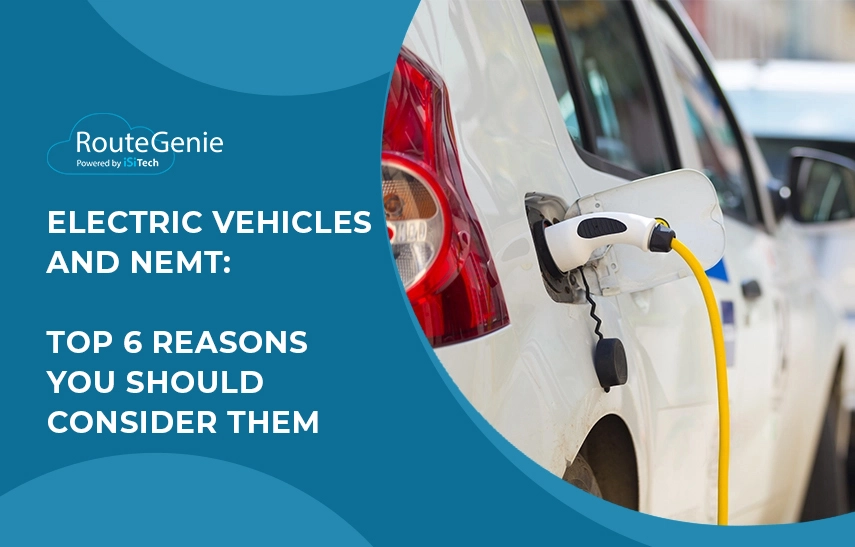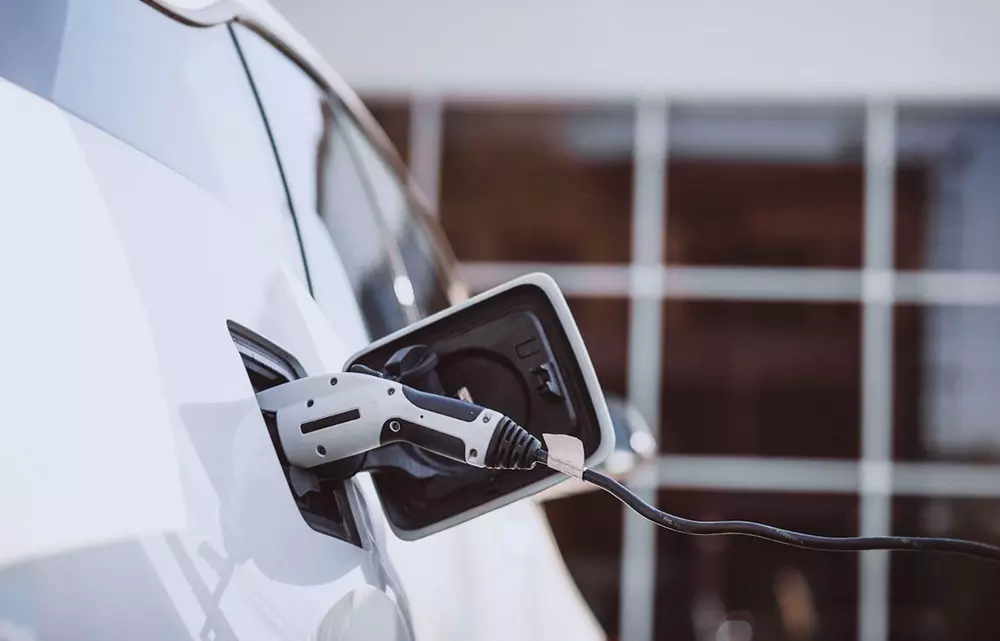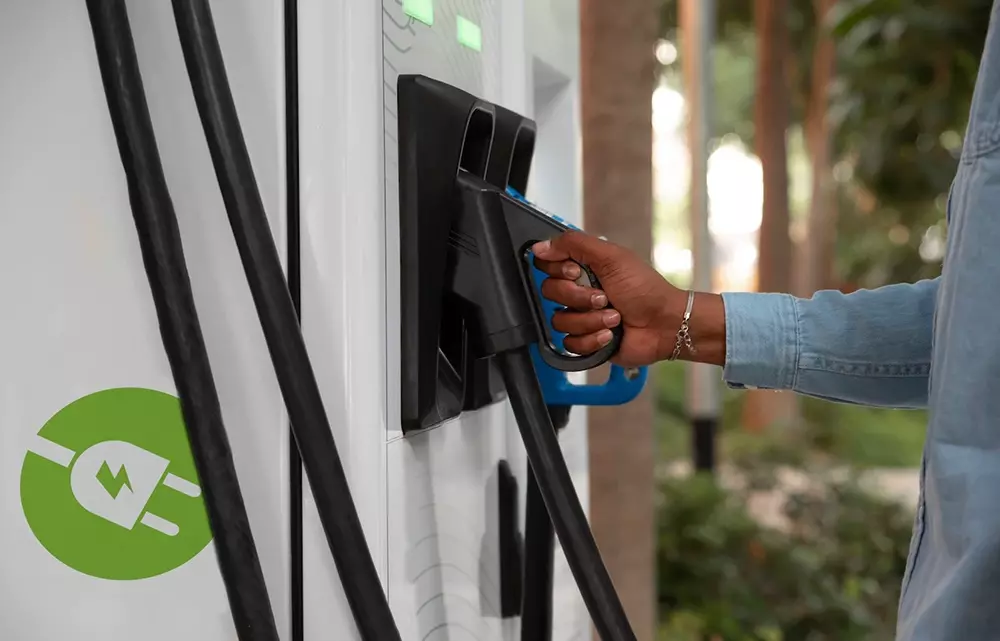Electric Vehicles and NEMT: Top 6 Reasons You Should Consider Them

The transportation industry is facing a paradigm shift. With the rise of electric vehicles (EVs), the need for oil is decreasing, and the number of people interested in clean energy is driving the wave. This is causing a ripple effect throughout the world of transport, and the non-medical emergency transport (NEMT) industry is no exception.
Those in the industry are considering EVs as an option for many reasons. EVs are cheaper to operate and maintain than traditional gas-powered vehicles. They also use clean energy and generate zero emissions, so they have a much smaller environmental footprint than conventional vehicles. And, perhaps more importantly, they can save thousands of dollars on fuel costs.
Many predict that the NEMT industry will undergo a significant transformation, and EVs are at the forefront of this change. So if you’re looking for a way to improve your NEMT business or considering buying non-emergency medical transportation vehicles for sale, electric vehicles are a great option to consider.
Contents:
- Why EVs Can be the Transport of the Future for NEMT
- Electric Vehicles: What To Consider Before Making the Switch
- Make the Change, Slowly but Surely
Why EVs Can be the Transport of the Future for NEMT

Leveraging technology to optimize operations is nothing new in NEMT. Robust software such as RouteGenie makes businesses more profitable, decreases no-shows, improves on-time performance, and creates the most efficient routes that benefit companies, passengers, and drivers.
So adding more technology, such as EVs, into the NEMT business structure is another opportunity to increase profits and take everything to the next level.
Here are just a few of the many reasons why electric vehicles are the way of the future for NEMT:
1. Range anxiety is Becoming a Thing of the past
The early adopters of EVs had to deal with cars powered by super expensive and rather small battery packs that would barely store 100 real-life miles of range, would take hours to recharge, and would degrade in a matter of years. With the arrival of Tesla to the scene, the ranges tripled, supercharging became a thing, and degradation became irrelevant. EVs with ranges over 250 miles are becoming the new industry standard.
Taking into account that typical daily mileage of an NEMT van rarely exceeds 150 miles, or even 100 miles in highly urbanized areas, modern electric vans are definitely suitable for the job.
Today, scientists are also working on new battery chemistries and form factors, which lead to increasing energy density, longer ranges, higher safety standards, and even faster charging rates. Eve Energy claims that its Omnicell battery technology supports 480 kW recharge rates, which means that 186 miles of range can be restored in just 5 minutes. Moreover, the manufacturer claims thousands of recharge cycles without the loss of the max capacity, which guarantees decades of driving.
We should also mention the developments in solid-state battery packs. They already exist and are becoming better with every year! These require fewer rare earth minerals; they are safer, denser, faster, lighter, and will last longer than your car.
Lastly, the network of fast charging stations is rapidly growing, and many owners find it convenient to install a charger at home to never visit a public plug.
2. Electric Vehicles Have Lower Maintenance and Fuel Costs
Despite the higher initial investment (that can be offset by the government tax credit), electric cars have proven to be way more affordable in terms of fuel costs, maintenance, and repairs.
EVs have fewer mechanical components than ICE vehicles. There’s no engine oil, fewer fluids (like coolant and brake fluid), no exhaust system, and no timing belts or spark plugs to replace. EVs often use regenerative braking, which converts kinetic energy back into electrical energy to charge the battery. This leads to less wear and tear on brake pads, meaning they last longer. Fewer components that can wear out or need regular maintenance.
According to some studies, the overall cost of maintaining an EV can be around 20-40% lower compared to ICE vehicles over the car’s lifetime. Less components needing regular replacement and lower costs for scheduled maintenance, all contribute to the motivation of large fleet owners to go electric.
Charging an EV tends to be cheaper than fueling a gasoline or diesel car. The exact savings depend on local electricity rates versus fuel prices, but on average when you compare the cost to charge an electric vehicle vs. the cost to fuel a gas vehicle, the EV is 3 times cheaper per mile than a gas-powered vehicle. This means you will only pay 4 cents per mile when you charge an EV, compared to 14 cents per mile in a gas-powered car. Additionally, operators can save the time needed to refuel the vehicle since the majority of the charging is taking place at night at the garage.
We have to admit that unknown long-term costs and higher insurance premiums are currently handicapping the green transition, but they are resolvable. The most significant cost concern for EVs is battery degradation over time, but modern EV batteries are proving to last much longer than initially expected. Many come with warranties that cover 8-10 years or a specific mileage (e.g., 100,000 miles). Insurance costs for EVs can sometimes be higher due to the expensive components, particularly the battery. However, this varies depending on the model and region.
3. Electric Vehicles Are More Energy-efficient Than Traditional Gasoline-powered Vehicles
Electric vehicles are about three times more energy-efficient compared to traditional gasoline-powered cars. This means EVs use less energy to travel the same distance as gasoline-powered vehicles.
The main reason for this difference in efficiency is that EVs convert energy from electricity. EVs also have regenerative braking, which recaptures energy that would otherwise be lost as heat. This boosts efficiency, with no byproducts that can harm the environment.
4. Electric Vehicles Produce Zero Emissions, Making Them Much Better for the Environment
Electric vehicles produce zero emissions, making them much better for the environment than traditional gas-powered cars.
But making the switch to an electric vehicle means a few compromises. In the NEMT industry, the vehicles must have enough space to carry the medical equipment passengers need. This means heavier vehicles with batteries that can last for longer distances.
EVs are already heavy enough with the load of batteries they carry. With the added weight of equipment, passengers, and harsh road conditions, EVs might not be practical to use for longer distances or to drive in rural areas.
Some companies might have to change how they route their trips. Travel times will have to be shorter, and routes must include enough charging areas along the way.
The lack of emissions from EVs helps create a healthier environment for everyone. However, companies have to consider how to deploy medical transportation vehicles in far-flung areas.
5. Electric Vehicles are Very Quiet, Which Can be a Significant Advantage for NEMT Providers
The lack of engine noise in EVs compared to gas vehicles can be an advantage. EVs are much quieter, allowing transport companies to offer their services with less disruption to the community.
EV technology also has the potential to improve the efficiency of NEMT operations. For example, the regenerative braking systems in many EVs can extend the range of vehicles and potentially reduce the need for frequent stops to charge the batteries.
6. Electric Vehicles are Becoming Increasingly Affordable
Electric vehicles are also becoming more reliable and affordable as technology continues to improve. Large fleets are increasingly turning to such vehicles as a cost-effective option. But it’s also an ethical decision to care for the planet.
Electric vehicles have several advantages when it comes to cost. EVs are not subject to the laws of supply and demand of petroleum and oil. Despite the significant upfront cost, long-term savings are possible with EVs.
In addition, many governments now offer incentives, electric vehicle tax credits, and rebates for businesses that switch to electric vehicles, further reducing expenses.
Bonus: Government Pressures and Incentives
The United Nations Net Zero initiative and the Paris Agreement were designed to reduce the effects of the global climate crisis; emissions need to be reduced by 45% by 2030 and reach net zero by 2050. Therefore, governments in developed countries are stimulating the reduction of CO2 emissions, and quite obviously internal combustion transportation is a significant contributing factor in this equation.
The current plan in the US is to increase the adoption of EVs to 35% by the year 2032. This is a revised number compared to the previous overoptimistic figure of 67%, but still, it is a fivefold increase compared to the current rates of EV adoption. It is plausible that sooner than later, automakers will be heavily taxed for avoiding electrification. Plus, those manufacturers that choose to go all-in with all-electric, are likely to have easier access to state funding.
For consumers, the EV option is also becoming an obvious choice. After all, prices are edging closer to parity with internal combustion vehicles, but tax credits of up to $7,500 are here to stay.
Electric Vehicles: What To Consider Before Making the Switch

More and more transport businesses are considering making the switch to electric vehicles as technology continues to develop. And EVs have many advantages over traditional gas-powered cars. But even so, there are also a few challenges that NEMT companies have to consider before making the switch.
For one, NEMT service providers must first ensure that they have the infrastructure in place to support an electric fleet. This includes a reliable and robust charging network and highly trained personnel who can install and maintain charging stations.
Business owners must decide how many NEMT vehicles they can have in a fleet, given how expensive they are and the relatively shorter distances EVs can cover.
Owners must also consider which routes an EV can best serve and whether they have the infrastructure in place when accidents or breakdowns occur.
Finally, NEMT companies will need to consider the impact switching to EVs will have on their customers. In some cases, customers may feel that an EV is less reliable than a traditional vehicle and will not meet their needs. They may still prefer the convenience of conventional gas-powered transport.
Make the Change, Slowly but Surely
Given the many benefits of EVs to the environment and the industry, making the switch is inevitable for most, if not all, transport providers. Research and technology are making significant advances each year, making the future of EV transport a sure thing for many businesses.
So if you’re a NEMT company, consider these benefits and the resources you have now to prepare for the future of transport. Combining traditional vehicles and EVs might be the answer for now. But electric cars will surely move in to make transportation cheaper, cleaner, and more reliable
About the author

As RouteGenie's Marketing Director, Yurii gained deep knowledge in the NEMT industry. He is an expert in marketing, utilizing all marketing channels to build RouteGenie's brand and to make sure NEMT providers have access to powerful NEMT software that can boost their growth. Yurii shares his knowledge by writing content on topics related to marketing, and the healthcare industry: medical transportation, home care, and medical billing.
The author assumes no responsibility or liability for any errors or omissions in the content of this site. The information contained in this site is provided on an "as is" basis with no guarantees of completeness, accuracy, usefulness or timeliness.